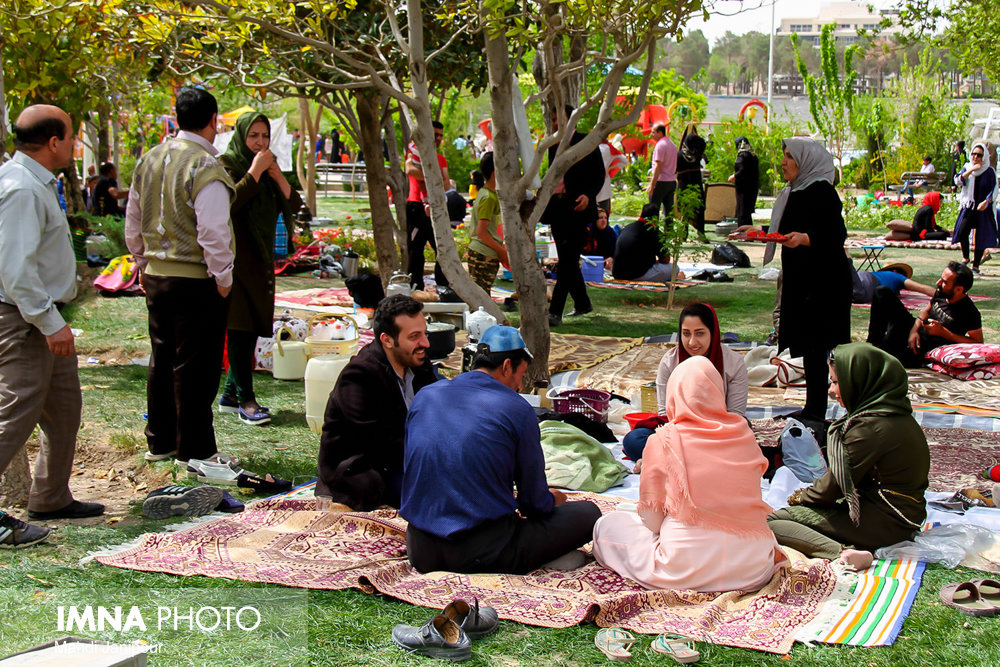Iran (IMNA) - Typically, on the first day of Noruz, family members gather around the table, with the Haft Seen on the table or set next to it, and await the exact moment of the arrival of the spring. At that time gifts are exchanged. Later in the day, on the very first day, the first house visits are paid to the most senior family members.
Typically, the youngers visit the elders first, and the elders return their visit later. The visits naturally have to be relatively short, otherwise one will not be able to visit everybody on their list. Every family announces in advance to their relatives and friends which days of the holidays are their reception days.
A visit generally lasts around 1 hour, where you often run into other visiting relatives and friends who happen to be paying a visit to the same house at that time. Because of the house visits, you make sure you have a sufficient supply of pastry, cookies, fresh and dried fruits and special nuts on hand, as you typically serve your visitors with these items plus tea or syrup.

Many Iranians will throw large Noruz parties in a central location as a way of dealing with the long distances between groups of friends and family.
Some Noruz celebrants believe that whatever a person does on Noruz will affect the rest of the year. So, if a person is warm and kind to their relatives, friends and neighbors on Noruz, then the new year will be a good one. On the other hand, if there are fights and disagreements, the year will be a bad one. Also, many people do a significant amount of “Spring Cleaning” prior to Noruz to rid the house of last year’s dirt and germs in preparation for a good new year.
One tradition that may not be very widespread (that is, it may belong to only a few families) is to place something sweet, such as honey or candy, in a safe place outside overnight. On the first morning of the new year, the first person up brings the sweet stuff into the house as another means of attaining a good new year.
The thirteenth day of the New Year festival is called Sizdah Bedar; It often falls on or very close to April Fool’s Day, as it is celebrated in some countries. People go out in the nature in groups and spend all day outdoors in the nature in form of family picnics. It is a day of festivity in the nature, where children play and music and dancing is abundant. On this day, people throw their sabzeh away in the nature as a symbolic act of making the nature greener, and to dispose of the bad luck that the sprouts are said to have been collecting from the household.
The thirteenth day celebrations, Seezdah Bedar, stem from the belief of the ancient Persians that the twelve constellations in the Zodiac controlled the months of the year, and each ruled the earth for a thousand years. At the end of which, the sky and the earth collapsed in chaos.

Iran tourism news


Your Comment